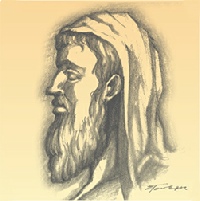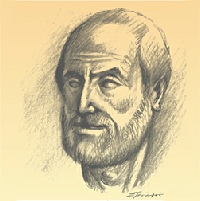

Copyright © Lucas Amiras 2020

In the "Elements" of Euclid (3th century B.C.) the primitive notions (point, line, surface, straight line, flat surface) are defined in a very problematic way.
Book I, Definitions
1. A point is that which has no part.
2. A line is breadthless length.
3. The ends of a line are points.
4. A straight line is a line which lies evenly with the points on itself.
5. A surface is that which has length and breadth only.
6. The edges of a surface are lines.
7. A plane surface is a surface which lies evenly with the straight lines on itself.
The struggle to define the primitive geometric notions in Euclid can be understood
as coming up of a philosophical tradition aiming at clarifying geometrical notions
and determining them terminologically. In the writings of Aristotle (384-
Ancient Geometry and Philosophy



